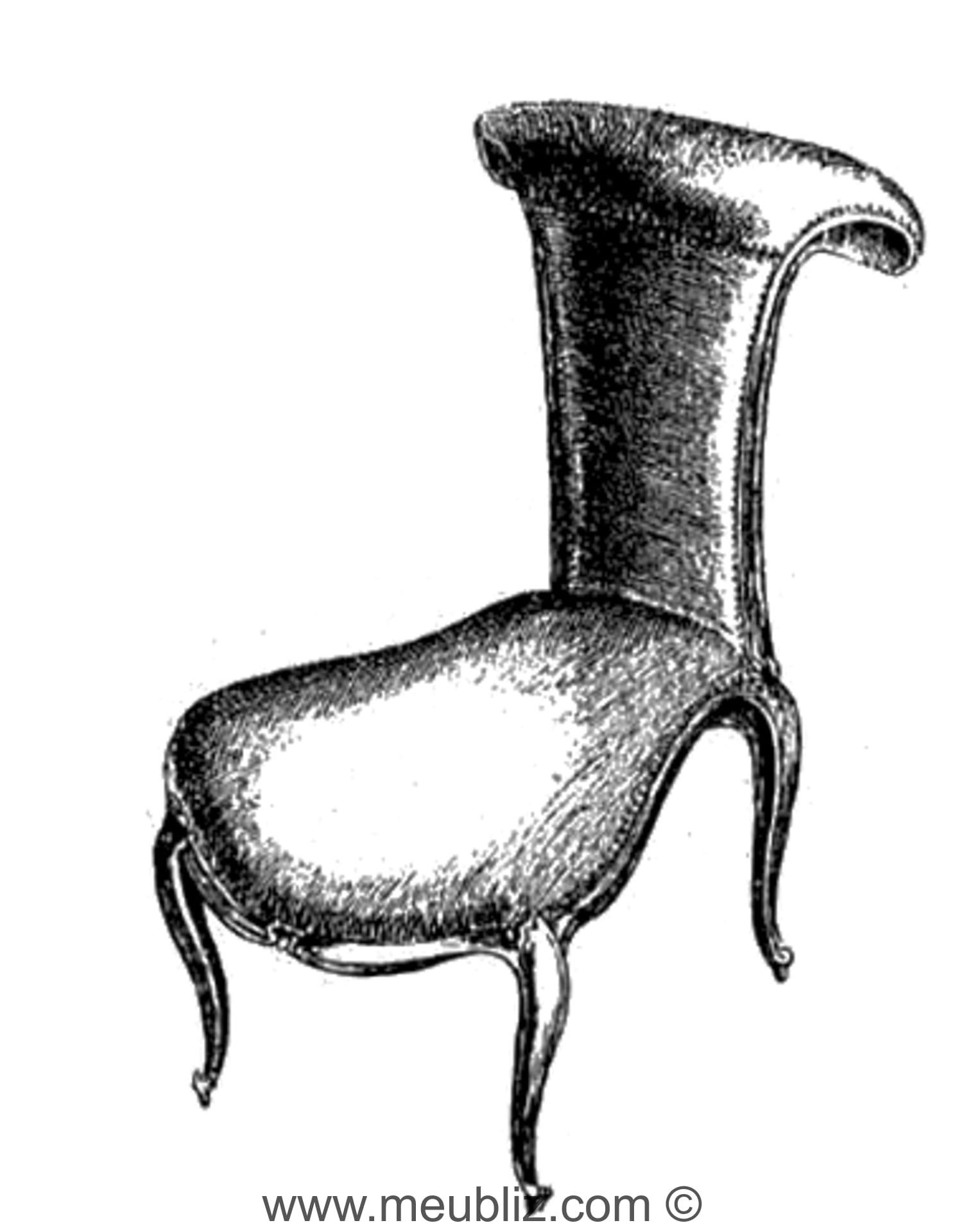Unveiling the Voyeuse Chair: A Window into 18th-Century Society
The voyeuse chair: an 18th-century French design innovation tailored for socializing and spectating in the salon. More than just a seat, this unique piece offers a compelling glimpse into the rituals and pastimes of elite French society. From card games to conversations, the voyeuse chair’s design facilitated engagement without disrupting the flow of activity. Imagine a bustling salon in the heart of Paris, filled with the chatter of aristocrats. The voyeuse chair provided a unique perch, a personal observation deck amidst this elaborate social ballet. These chairs weren’t about sinking into plush cushions; they were about seeing and being seen—or perhaps, more accurately, seeing without being seen.
Decoding the Design: Form and Function
The design of these chairs, often crafted from ornate, carved beechwood (sometimes gilded) and upholstered in luxurious fabrics like velvet, is intrinsically linked to their function. The elevated, often saddle-shaped seats, sometimes combined with a rotating base, allowed the sitter to survey the scene, catching snippets of conversation and observing the interplay between guests. Think of the high, sometimes almost precarious-looking seats. These weren’t designed for lounging; they were designed for looking. Some even featured rotating seats on circular platforms, allowing the “voyeur” to easily shift their view. The back of the chair could be just as interesting, sometimes lyre-shaped, providing comfortable support while possibly enhancing the acoustic properties of the chair. It’s important to note that research on furniture history is ongoing, and new information about the acoustic benefits of lyre-shaped backs may emerge.
There’s a less common type of voyeuse chair called the voyeuse à genoux – literally “voyeuse on the knees.” This design allowed someone to perch on their knees, offering a different angle for observation, perhaps more discreet. The bergère voyeuse (also bergère ponteuse), a variation of the bergère chair, featured a small ledge at the top of the chair back, possibly for leaning or resting objects. Some experts believe this ledge may have also functioned as a subtle display of social status, though further research is needed to confirm this theory.
Social Significance and Modern Appeal: From Salon to Showroom
The voyeuse chair wasn’t just a quirky piece of furniture; it tells us a great deal about 18th-century French social dynamics. The ability to observe and understand the unspoken language of social interaction was highly valued. The voyeuse chair facilitated this, providing a discreet vantage point. In ancient battles, warriors relied on essential gear to protect themselves. Dive into the world of tassets and uncover their critical role in medieval warfare. Some historians suggest these chairs were particularly popular among women, who, at the time, may have had fewer opportunities to directly participate in certain social or political discussions.
Today, these chairs are coveted by collectors and interior designers, adding historical intrigue and a touch of elegance to any room. They’re a tangible link to a vanished world, whispering stories of elegant salons and whispered conversations. While the exact social nuances of their use might be lost to time, the voyeuse chair continues to fascinate, prompting us to consider the ways we observe and interact with the world around us.
The Georgian Voyeuse: A Specialized Seat for Spectatorship
The Georgian voyeuse (1714-1837), a specialized chair of the 18th century, primarily allowed men to comfortably observe card games. Distinct from ordinary side chairs, the voyeuse’s padded top rail served as a leaning point, catering to the social dynamics of Georgian-era card playing. The voyeuse à genoux, a lower variant, likely provided a similar experience for women, adapting to the social etiquette of the time. While primarily associated with French design, the voyeuse’s influence probably extended to other regions during this period, such as England, possibly reflecting broader trends in both furniture design and social interaction. Further research might clarify the extent of this cross-cultural exchange.
The Tufted Leather Voyeuse: A Modern Interpretation
The tufted leather voyeuse offers a luxurious take on this classic design. The tufting not only creates a visually appealing pattern but also distributes the filling evenly for lasting comfort. This modern interpretation maintains the signature high back and padded top rail, now often in rich, tufted leather. This adds elegance and sophistication, making it a statement piece. While the original purpose was observation, today’s voyeuse chairs are about comfort and style. They can fit into various décors, from traditional to modern, offering a space for quiet contemplation.
| Feature | Georgian Voyeuse | Voyeuse à genoux | Tufted Leather Voyeuse |
|---|---|---|---|
| Height | Standard | Lower | Standard |
| Top Rail | Padded | Possibly Padded | Padded |
| Primary User | Men | Women | Anyone |
| Purpose | Observing card games | Observing card games, etiquette | Relaxation, style |
| Material | Wood, Fabric | Wood, Fabric | Often Leather, sometimes wood |
While “voyeuse” literally means “viewer,” the modern usage focuses on comfort and style. Genuine leather voyeuses can be an investment, but their durability and timeless design offer long-term value. Ongoing research into ergonomics may further refine the design, but for now, we appreciate the blend of comfort, style, and history. The ongoing study of furniture continues to offer new insights into how people lived and interacted, and the voyeuse chair serves as a compelling example of this historical connection.









